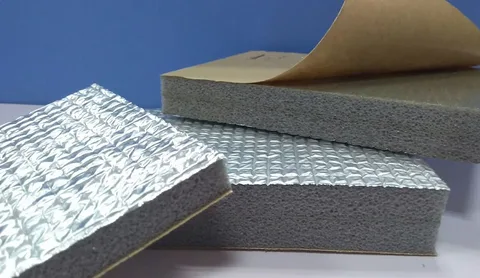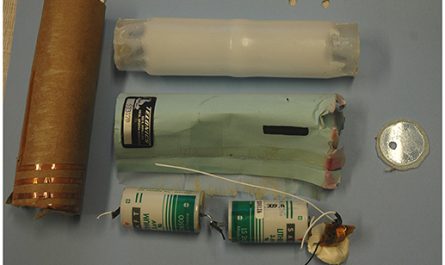As concerns over climate change and energy usage continue to grow, finding ways to reduce energy consumption in homes and buildings has become increasingly important. One of the most effective methods is through the use of high-quality thermal insulation materials. By preventing the transfer of heat into or out of a structure, proper insulation can significantly lower yearly energy costs while also helping to decrease carbon emissions.
Common Thermal Insulation Materials
A wide range of Thermal Insulation Materials exist on the market today to suit different budget and performance requirements. Some of the most prevalent include:
Fiberglass: One of the most commonly used insulation materials, fiberglass consists of fine glass strands formed into batts, rolls, or loose-fill form. It provides good thermal resistance and is affordable, though can irritate skin and lungs during installation.
Mineral Wool: Similar to fiberglass but made from minerals like slag wool or rock wool, mineral wool offers fire protection abilities in addition to thermal insulation. It has a denser construction that resists settling better than fiberglass over time.
Cellulose: Produced from recycled newspaper, cellulose is a sustainable choice for low-cost insulation. It performs nearly as well as fiberglass and mineral wool when properly installed at a sufficient density. Concerns include potential for mold growth if it gets wet.
Spray Foam: Both closed-cell and open-cell spray foams provide outstanding air sealing and thermal resistance. They fully fill cavities and adhere tightly to surfaces, yet have a higher upfront cost than batt/roll insulation.
Flexible Elastomeric Foam: Made of closed-cell rubber, flexible elastomeric foam remains pliable even in extreme temperatures. Primary uses include insulation for pipes, plumbing, and sealing small cracks or gaps.
rigid insulation boards: Common board insulation products include polystyrene, polyisocyanurate, and polyurethane foam boards. Easy to install, they offer thermal and moisture protection for foundations, attics, walls, and roofs.
Where Thermal Insulation is Needed
Nearly every part of a home or building could benefit from added or improved insulation. Some key areas to focus on include:
Attics: Attic insulation is arguably the most impactful project, as heat gained or lost through an uninsulated attic is wasted energy. Aim for R-38 to R-60 depending on climate.
Exterior Walls: Blown-in or dense-packed cellulose insulation provides effective wall insulation with minimal remodeling needed. Cavity walls should be R-13 to R-20.
Foundations: Rigid foam boards or spray foams insulate below-grade walls to prevent heat transfer through concrete. Vertical walls need R-10 minimum.
Crawlspaces: Any ventilation requirements still allow fibrous or spray foams to insulate crawlspace walls and perimeters for energy savings.
Ductwork: Supply and return ducts located in unheated spaces like attics or crawlspaces will perform much better insulated to R-8. This prevents heated/cooled air loss.
Benefits of Proper Thermal Insulation
Efficient insulation brings tangible benefits both financially and environmentally:
– Lower utility bills through reduced heating/cooling costs, paying for the insulation investment over time. Estimates show savings of 20-30% annually on energy usage.
– Improved indoor climate control from more consistent, even temperatures without drafts or temperature swings room to room.
– Better acoustic insulation dampens external sounds like traffic for a peaceful indoor space.
– Reduced carbon footprint as less fossil fuels are needed to power HVAC equipment over the long run. This helps efforts to combat climate change.
– Additional energy conserved translates to less strain on infrastructure like power plants that produce electricity.
– Decreased moisture issues as insulation fights condensation concerns especially in walls, crawlspaces, and attics where it forms readily.
– Protection against extreme outdoor temperatures, preserving indoor comfort in very hot or cold weather.
Choosing Insulation Materials
Multiple factors determine the best insulation material for a given application, including performance needs, budget constraints, and any special considerations. Consultation with insulation contractors allows reviewing options best suited to specific building characteristics. Proper installation is also key to maximizing longevity and effectiveness of whichever products are selected for maximized benefit. With so many options that deliver energy savings for decades, insulation upgrades remain a smart, future-proof investment.
As energy costs rise and climate change becomes an ever greater global challenge, reducing wasted energy through improved building insulation grows in importance. The materials discussed here represent top performers for thermal resistance whether installed professionally or via DIY methods. With careful choice and installation of the right insulation for each project, homes and structures of all kinds stand to dramatically curb energy usage and associated emissions through a relatively low-cost upgrade. Widespread insulation projects pave the way to a more sustainable built environment.
*Note:
1. Source: Coherent Market Insights, Public sources, Desk research
2. We have leveraged AI tools to mine information and compile it




